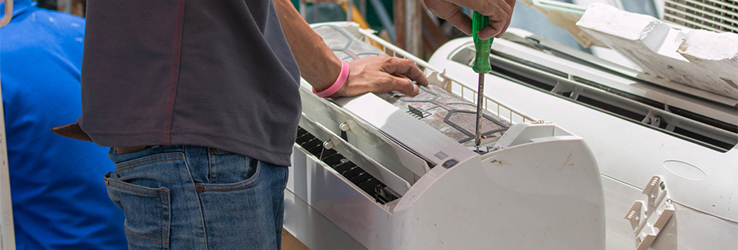Call us on 01282 863825

The modern air conditioning system is a relatively recent invention, but people have been trying to find ways to keep cool for centuries. Today, we can count on air cons in our homes, hospitals and offices to keep us cool whatever the weather, but it wasn’t until the turn of the last century that a machine was invented that was destined to become the forerunner of the modern air con system.
For centuries, air conditioning systems – such as they were – were primarily regarded as a luxury for the super-rich. The Romans are some of the earliest known adopters of air conditioning systems, and their techniques were varied, to say the least. Some wealthy private citizens took advantage of Rome’s famous aqueduct system to run cool water around the walls of their homes, while in the third century, the Roman Emperor Elagabalus simply dumped a literal mountain of snow in the garden next to his villa, so he could use it to keep cool in the summer months.
There were other efforts around the world, too, that varied in their methods and efficiency. In the 2nd century, a Chinese inventor successfully created a room-sized hand-powered rotary fan, while in traditional Middle Eastern architecture, windows were built to face away from the sun. The first serious advances in air conditioning technology were both American inventions; in the 1830s, US physician John Gorrie designed a fan that blew across a container of ice for cooling hospital rooms. Half a century later in 1881, President James Garfield was shot by an assassin. Naval engineers built a makeshift cooling unit to keep him cool and comfortable – it blew air through water-soaked cloth, while a fan overhead kept the cool air close to the ground. It could lower room temperature by up to 20 degrees Fahrenheit, but used half a million pounds of ice in over two months. Much to the nation’s horror, the president later died of his wounds anyway.
The advances made by world-renowned inventor Nikola Tesla were to transform the budding technology, which benefitted from his design of oscillating fans in the early 20th century. Once again, American ingenuity led the way – this time in the form of young inventor Willis Carrier from New York. In 1902 he built a spray-driven temperature and humidity controlled system, not for human comfort but to enhance productivity in the printing plant where he worked. However, the ammonia he used as the coolant was highly toxic. Exactly 22 years later he produced a machine which further built on the strengths of his first invention, which boasted an added central compressor to reduce the machine’s total size. It saw its first debut in a movie theatre in Times Square that same year. For decades afterward, crowds flocked to the air-conditioned movie theatres on hot summer days, spawning the phenomenon of the summer blockbuster.
In the decades following, the invention spread throughout the rest of the United States, eventually finding its way into Europe too. In 1947, British scholar S.F. Markham stated that “the greatest contribution to civilisation this century may well be air conditioning.” At the time, there was no denying his statement, and arguably the truth of it carries right through to today.
In modern times, America still leads the way when it comes to the sheer number of residential air conditioning installed in homes, but this is largely due to the continent’s more extreme temperatures. Rapidly increasing numbers of British homes are adopting it too, and it remains one of the most crucial home innovations on the market.
Don’t forget to follow us on Twitter: @Askews_Ltd